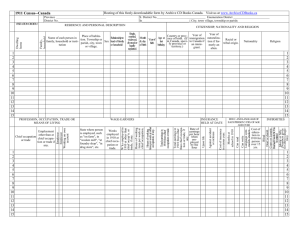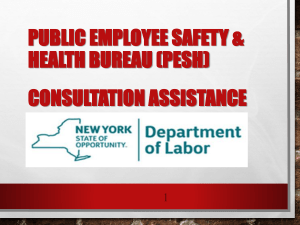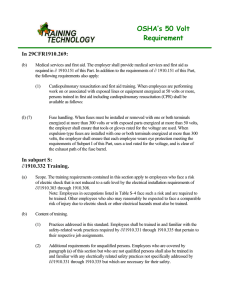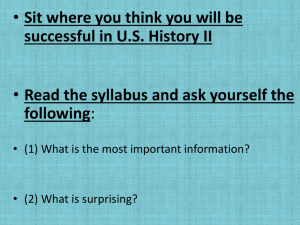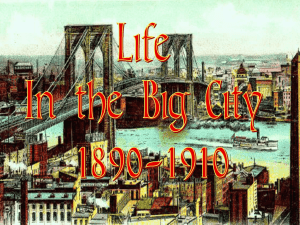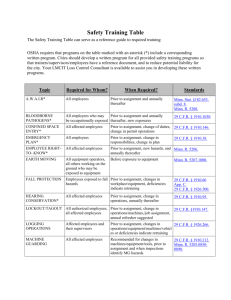What is your favorite city? Why?
advertisement
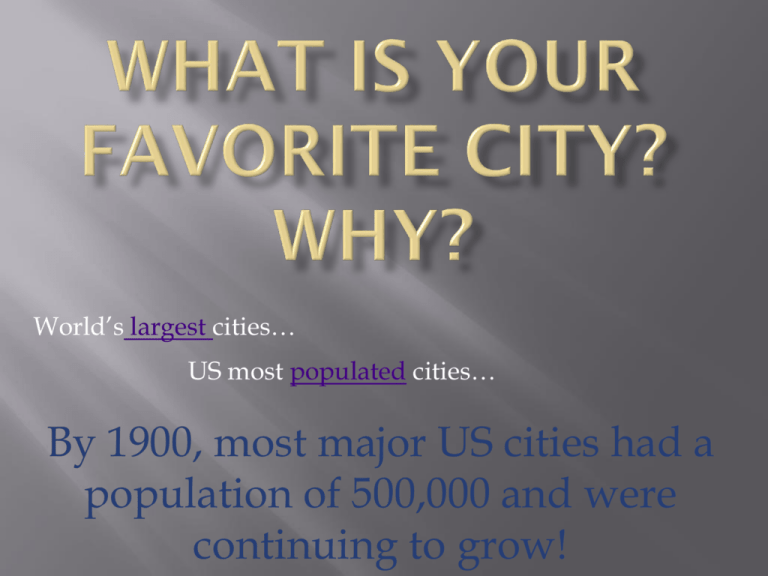
World’s largest cities… US most populated cities… By 1900, most major US cities had a population of 500,000 and were continuing to grow! •Transportation Networks •Architecture •Mass Culture Since cities offered jobs, people flocked there and transportation had to accommodate their arrival and movement through the city. Mass Transit Railroad systems Subways (Boston) Trolleys Cable Cars Skyscrapers Suburbs Most buildings were 5 stories at the time. Newspapers and comic strips: Pulitzer and Hearst Department Stores – Marshall Field World Fairs Amusement Parks Coney Island Central Park What is Marshall Field’s today? Chicago Boston NYC Philadelphia Baltimore FREE CHOICE Choose a topic, or multiple, from today’s class to further explore: Research the differences in city designs: NYC, Phillie, Chicago, Boston Examine the leisure activities: find comics, explore fashion and music, study amusement parks, look up Central Park’s significance Transportation: first subways, compare to Europe’s progress, why weren’t cable and trolley cars everywhere Write your research on a piece of paper to be collected. Bring in a Chicago World’s Fair 1893 story: Invention Innovation Designer Food vendors Crime Drama ______________ ____________ ____ _______ Count and list the totals: number of rooms in your house, bathrooms, bedrooms, TVs, cars, and pairs of shoes. Read the Chapter 20, Section 3 Summary Create your own power point, just like Mrs. Cag’s Tenements/Apartments – overcrowded, dark, unsanitary Low trash standards No safety standards: no fire departments, no clean water Plumbing was rare Diseases spread quickly: cholera, thyphoid, influenza, tuberculosis 50% of babies died Air pollution Clasp Locker 1910 2014 $23.00 $1.00 1910 $438.00 ($9 a week) 2014 $43,924.00 1910 $0.32 2014 $3.81 1910 $0.23 2014 $1.40 12 Day Cruise 1910 $60.00 2014 $1800.00 1910 2014 $1.15 Billion $17 Trillion How have things improved? Or did they just get worse? Compare • • • • • • Small apartments Lots of jobs Mass transit Crime Culture communities poverty Contrast • • • • Fire and health codes Less illness Medical care Lawsuits/Regulations for change The average life expectancy for men was 47 years. Fuel for a car was sold in drug stores only. Only 14 percent of the homes had a bathtub. Only 8 percent of the homes had a telephone. There were only 8,000 cars and only 144 miles of paved roads. The maximum speed limit in most cities was 10 mph. More than 95 percent of all births took place at HOME. Ninety percent of all Doctors had NO COLLEGE EDUCATION! Most women washed their hair once a month, and used egg yolks for shampoo. The Five leading causes of death were: 1. Pneumonia/influenza 2. Tuberculosis 3. Diarrhea 4. Heart disease 5. Stroke The American flag had 45 stars. The population of Las Vegas , Nevada , was only 30! Crossword puzzles, canned beer, and iced tea hadn't been invented yet. There was no Mother's Day or Father's Day. Two out of every 10 adults couldn't read or write and only 6 percent of all Americans had graduated from high school. Marijuana, heroin, and morphine were all available over the counter at drugstores. There were about 230 reported murders in the ENTIRE U. S. A. ! Write a compare and contrast paragraph about city life or immigration.
